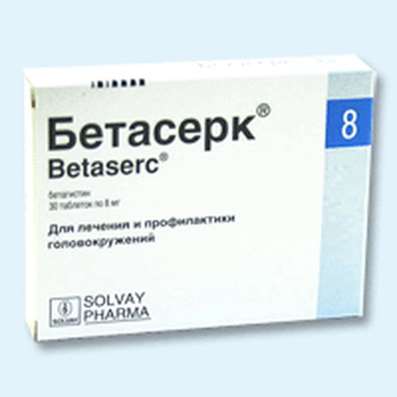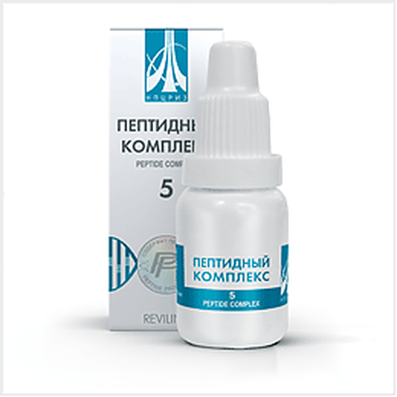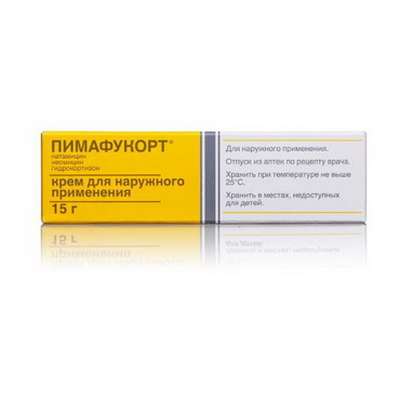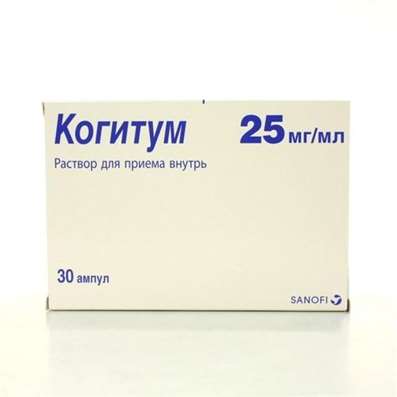Instruction for use: Visanne
I want this, give me price
Active substance Dienogest
ATX code G03D Gestagens
Pharmacological group
Estrogens, gestagens; Their homologues and antagonists
Nosological classification (ICD-10)
N80 Endometriosis
Endometrioid endometriosis
Composition
Tablets 1 table.
active substance:
Dienogest micronized 2 mg
Auxiliary substances: lactose monohydrate - 62.8 mg; Potato starch - 36 mg; MCC - 18 mg; Povidone K25 - 8.1 mg; Talc - 4.05 mg; Crospovidone - 2.7 mg; Magnesium stearate - 1.35 mg
Description of dosage form
Round white or almost white tablets with a flat surface and bevelled edges, engraved "B" on one side.
pharmachologic effect
Pharmacological action - antiandrogenic, progestagenic.
Pharmacodynamics
Dienogest is a derivative of nortestosterone, characterized by antiandrogenic activity, which is approximately one third of the activity of cyproterone acetate. Dienogest binds to the receptors of progesterone in the human uterus, possessing only 10% of the relative affinity of progesterone. Despite the low affinity for the receptors of progesterone, dienogest is characterized by a powerful progestagen effect in vivo. Dienogest does not have significant androgenic, mineralocorticoid or glucocorticoid activity in vivo (a process or a reaction in a living body).
Dienogest acts on endometriosis, by suppressing the trophic effects of estrogens against autopic and ectopic endometrium, due to decreased estrogen production in the ovaries and a decrease in their plasma concentration.
With prolonged use causes initial decidualization of endometrial tissue with subsequent atrophy of endometriotic foci. Additional properties of the dienogest, such as immunological and anti-angiogenic effects, seem to contribute to its suppressive effects on cell proliferation.
Pharmacokinetics
Absorption. After oral intake of dienogest quickly and almost completely absorbed. Cmax in blood serum, which is 47 ng / ml, is achieved approximately 1.5 hours after a single oral intake. Bioavailability is about 91%. The pharmacokinetics of dienogest in the dose range from 1 to 8 mg is characterized by dose-dependence.
Distribution. Dienogest binds to serum albumin and does not bind to sex hormone binding globulin (GLB (globulin binding sex hormones)), as well as with corticosteroid-binding globulin. 10% of the total concentration of the substance in the blood serum is in the form of a free steroid, while about 90% is nonspecifically associated with albumin. The apparent Vd of the dienogest is 40 liters.
Metabolism. Dienogest is almost completely metabolized mainly by hydroxylation with the formation of several practically inactive metabolites. Based on the results of in vitro and in vivo studies, the main enzyme involved in dienogest metabolism is CYP3A4 (cytochrome P450 isoenzyme). Metabolites are excreted very quickly, so the predominant fraction in the blood plasma is unchanged dienogest. The rate of metabolic clearance from serum is 64 ml / min.
Elimination. The concentration of dienogest in the blood serum is reduced biphasic. T1 / 2 in the terminal phase is approximately 9-10 hours. After ingestion at a dose of 0.1 mg / kg, dienogest is excreted as metabolites, which are released through the kidneys and intestines in a ratio of approximately 3: 1. T1 / 2 metabolites when excreted by the kidneys is 14 hours. After oral intake, approximately 86% of the received dose is excreted within 6 days, with the major part excreted within the first 24 hours, mainly by the kidneys.
Equilibrium concentration. The pharmacokinetics of dienogest does not depend on the level of SHBG. The concentration of dienogest in the blood serum after daily intake increases approximately 1.24 times, reaching Css (equilibrium concentration) after 4 days of admission. The pharmacokinetics of dienogest after repeated administration of the drug Visanne can be predicted on the basis of pharmacokinetics after a single dose.
Indication
Treatment of endometriosis.
Contraindications
The drug Visanne should not be used in the presence of any of the following conditions, some of which are common for all drugs containing only the progestogen component. If any of these conditions develop against the background of taking the drug Visanne, the use of the drug should be stopped immediately.
Acute thrombophlebitis, venous thromboembolism at the present time;
Diseases of the heart and arteries, which are based on atherosclerotic vascular lesions (including coronary heart disease (ischemic heart disease), myocardial infarction, stroke and transient ischemic attack) at present or in the anamnesis;
Diabetes mellitus with vascular complications;
Severe liver diseases at present or in the anamnesis (in the absence of normalization of functional liver samples);
Liver tumors (benign and malignant) at present or in the anamnesis;
Identified or suspected hormone-dependent malignant tumors, incl. mammary cancer;
Bleeding from the vagina of an unknown origin;
Cholestatic jaundice of pregnant women in anamnesis;
Hypersensitivity to active substances or any of the excipients;
Intolerance to galactose, deficiency of lactase, glucose-galactose malabsorption;
Pregnancy and the period of breastfeeding;
Age to 12 years (before the onset of menarche).
Precautions: a history of depression, ectopic pregnancy, a history of hypertension, chronic heart failure, migraine with aura, diabetes without vascular complications, hyperlipidemia, deep vein thrombophlebitis a history of venous thromboembolism (see "Special Instructions" section.) .
pregnancy and lactation
Pregnancy. The experience of using dienogest by pregnant women is very limited. In animal studies of reproductive toxicity, genotoxicity and carcinogenicity in the use of the drug is not revealed. The drug Visanne should not be given to pregnant women because there is no need to treat endometriosis during pregnancy.
Breastfeeding period. The use of the drug Visanne during breastfeeding is not recommended, tk. Studies on animals indicate the isolation of dienogest with breast milk. The decision to terminate breast-feeding or refusal of reception Visan adopted on the basis of estimates of the ratio benefit of breastfeeding for the child and the benefit of therapy for the woman.
Side effects
Side effects occur more often in the first months of taking the drug Visanne, and over time their number decreases. The most common side effects include: vaginal bleeding (including spotting, metrorrhagia, menorrhagia, irregular bleeding), headache, discomfort in the breast, depressed mood, and acne.
Frequency is defined as the "often" (from ≥1 / 100 to <1/10) and "rare" (from ≥1 / 1000 to <1/100).
Interaction
The effect of other drugs (drug) on the drug Visanne
Individual inducers or inhibitors of enzymes (isoenzyme CYP3A)
The gestagens, incl. dienogest, metabolized mainly involving cytochrome P450 3A4 (CYP3A4 (cytochrome P450)), located in the intestinal mucosa and in the liver. Therefore, inducers or inhibitors of CYP3A4 can influence the metabolism of gestagenic drugs.
The increased clearance of sex hormones, due to the induction of enzymes, can lead to a decrease in the therapeutic effect of the drug Visanne, and also cause side effects, for example, a change in the character of uterine bleeding.
Reducing the clearance of sex hormones due to inhibition of enzymes can increase the exposure of the dienogast and cause side effects.
Substances that can induce enzymes
May be interaction with drugs that induce microsomal enzymes (e.g. the cytochrome P450 system), whereby the clearance of sex hormones can be increased (to such drug substances include phenytoin, barbiturates, primidone, carbamazepine, rifampicin and possibly also oxcarbazepine, topiramate, Felbamate, nevirapine, griseofulvin, as well as preparations containing Hypericum perforated).
Induction of enzymes is usually observed a few days after initiation of therapy, maximum induction is observed for several weeks and then can persist for 4 weeks after discontinuation of therapy.
The effect of the inducer CYP3A4 rifampicin was studied in healthy postmenopausal women. When simultaneous administration of rifampicin with tablets estradiol valerate / dienogest showed a significant reduction Css (equilibrium concentration) and systemic exposure of dienogest. Systemic exposure of dienogest at Css, determined by the value of AUC (area under the curve "concentration-time") 0-24 hours, was reduced by 83%.
Substances with a variable effect on the clearance of sex hormones
When combined with sex hormones, many drugs for the treatment of HIV and hepatitis C and NRTI can increase or decrease the concentration of progestins in the blood plasma. In some cases, such changes may be clinically significant.
Substances that reduce the clearance of sex hormones (enzyme inhibitors)
Dienogest is the substrate of cytochrome P450 (CYP) 3A4.
Highly CYP3A4 inhibitors and inhibitors with moderate activity, for example, azole fungicides itraconazole, voriconazole, fluconazole), verapamil, macrolides (clarithromycin and erythromycin), diltiazem, and grapefruit juice may increase the progestogen concentration in blood plasma.
In one study, in which was studied the effect of CYP3A4 inhibitors (ketoconazole, erythromycin), concentrations of estradiol valerate and dienogest in plasma when Css were increased. In the case of simultaneous administration with a potent inhibitor of ketoconazole, the value of AUC0-24 h at an equilibrium concentration of dienogest increased by 186%. When used simultaneously with a moderate inhibitor of CYP3A4 erythromycin, the AUC0-24 hour value of the dienogest at Css increased by 62%. The clinical significance of these interactions is not clear.
Influence of dienogest on other drugs
Based on data from in vitro inhibition studies, the clinically significant interaction of the drug Visanne with the mediated enzymes of the cytochrome P450 system by the metabolism of other drugs is unlikely.
Note: for the identification of possible interactions, you should read the instructions of the associated drugs.
Interaction with food products
Food intake with a high fat content did not affect the bioavailability of the drug Visanne.
Other types of interaction
Receiving progestogens can affect the results of some laboratory tests, including biochemical parameters of the liver, thyroid, adrenals and kidneys, plasma concentrations of protein (boosters), such lipid fractions / lipoprotein, carbohydrate metabolism parameters and coagulation parameters.
Dosing and Administration
Inside. Before the start of taking the drug Visanne, it is necessary to stop the use of hormonal contraception.
Reception scheme
The beginning of taking the drug Visanne is possible on any day of the menstrual cycle. Take one tablet a day without a break, preferably at the same time every day, if necessary, washed down with water or another liquid. Tablets should be taken continuously, regardless of bleeding from the vagina. After the completion of taking the tablets from one package begin taking the pills from the next, without taking a break in taking the drug.
When skipping pills and in the case of vomiting and / or diarrhea (if this occurs within 3-4 hours after taking the pill), the effectiveness of the drug Visanne may be reduced. In case of missing one or more tablets, a woman should take one tablet as soon as she remembers it, and then the next day continue taking the pills at the usual time. Instead of a pill that has not been absorbed due to vomiting or diarrhea, one tablet should also be taken. There is no connection between taking the drug and eating.
The efficacy and safety of the drug is proven with a duration of therapy of no more than 15 months.
Overdose
No serious violations were reported with an overdose.
Symptoms that can be noted in an overdose: nausea, vomiting, spotting spotting or metrorrhagia.
There is no specific antidote; symptomatic treatment should be performed.
special instructions
Before starting the preparation of the drug, you must exclude pregnancy. During the reception of the drug Visanne, when contraception is necessary, patients are recommended to use non-hormonal contraceptive methods (for example, barrier).
Fertility
According to available data, during the reception of the drug Visanne, most patients are suppressed ovulation. However, Byzantine is not a contraceptive. Contraceptive efficacy was not studied in the preparation of Visanne, however, as shown in the study, in 20 women the dose of dienogest 2 mg suppressed ovulation after 1 month of treatment.
According to available data, the physiological menstrual cycle is restored within 2 months after discontinuation of the drug Visanne.
The probability of an ectopic pregnancy is higher in patients taking contraceptive preparations containing only a progestational component, compared with patients taking combined oral contraceptives. Thus, for women with an ectopic pregnancy in history or with obstruction of the fallopian tubes, the relationship between benefit and risk should be evaluated before using the drug Visanne.
Since Byzantine is a preparation with only a progestational component, it can be assumed that special warnings and precautions when using other drugs of this type are also valid for the drug Visanne, although not all of them have been confirmed in the course of clinical trials of the drug Visanne.
In the presence or aggravation of any of the following conditions or risk factors, an individual assessment of the benefit-risk ratio should be conducted before or after the initiation of or continued use of the drug.
Circulatory disorders
In the course of epidemiological studies, insufficient evidence has been obtained to confirm a link between the use of drugs with only a gestagen component and an increased risk of myocardial infarction or thromboembolism of cerebral vessels. The risk of cardiovascular episodes and disorders of cerebral circulation is associated more with the increase in age, arterial hypertension and smoking. The risk of developing a stroke in women with arterial hypertension may slightly increase when taking drugs with only a progestational component.
Some studies indicate the possibility of a statistically insignificant increase in the risk of venous thromboembolism (deep vein thrombosis, pulmonary embolism) due to the use of drugs with only a gestagen component. The generally accepted risk factors for venous thromboembolism (VTE) include a corresponding family history (VTE from a brother, a sister or one of the parents at a relatively early age), age, obesity, prolonged immobilization, extensive surgery or massive trauma. In the case of prolonged immobilization, it is recommended to stop taking the drug Visanne (at the planned operation, at least four weeks before it) and resume the use of the drug only two weeks after complete recovery of motor ability.
An increased risk of thromboembolism in the postpartum period should be considered.
With the development or suspected development of arterial or venous thrombosis, the drug should be discontinued immediately.
Tumors
A meta-analysis of 54 epidemiological studies revealed a slight increase in the relative risk (RR = 1.24) of breast cancer in women who used combined oral contraceptives (COCs), primarily estrogen-progestational drugs, at the time of the study. This increased risk gradually disappears within 10 years after discontinuation of the use of combined oral contraceptives (COCs (combined oral contraceptives)). Because breast cancer is rare in women younger than 40 years, a slight increase in the number of such diagnoses in women taking combined COCs at the moment or using combined COCs earlier is small relative to the overall risk of breast cancer. The risk of breast cancer detection in women using hormonal contraceptives with only a gestagen component may be similar in magnitude to the corresponding risk associated with the use of COCs. However, the facts relating to preparations with only a progestational component are based on much smaller populations of women using them and therefore are less convincing than the COC data. Establish a causal relationship based on these studies is not possible. The revealed pattern of increased risk may be due to earlier diagnosis of breast cancer in women taking COC, the biological effect of COCs, or a combination of both.
Women who use hormonal contraceptives are diagnosed with earlier clinical stages of breast cancer than women who never used them.
In rare cases, against the background of the use of hormonal substances similar to that contained in the preparation of Byzantine, benign, and even less often, malignant liver tumors were noted. In some cases, these tumors led to a life-threatening intra-abdominal bleeding. If the woman taking the drug Visanne has severe pain in the upper abdomen, the liver is enlarged or there are signs of intra-abdominal bleeding, then in case of differential diagnosis, the probability of having a liver tumor should be taken into account.
Changing the nature of bleeding
In most women, taking the drug Visanne affects the nature of menstrual bleeding.
Against the background of the use of the drug Visanne, uterine bleeding can increase, for example in women with adenomyosis or uterine leiomyoma. Abundant and prolonged bleeding may lead to anemia (in some cases severe). In such cases, the question of the cancellation of the drug Visanne should be considered.
Changes in bone mineral density (BMD)
When using the drug Visanne in adolescents (12-18 years) during 12 months of treatment, a decrease in BMD of the lumbar region was observed on average by 1.2%. After discontinuation of treatment, BMD in these patients again increased.
Reduction of BMD causes special concerns in adolescence and in adolescence, as this is a particularly important period for bone growth. It is not known whether the decrease in BMD affects the maximum bone mass in this population and whether the risk of fractures increases in the future.
Therefore, the physician should consider the benefit of the drug in relation to the possible risks for each patient, also taking into account the possibility of the occurrence of risk factors for osteoporosis (eg, dysmetabolic osteopathy, family history of osteoporosis, low body mass index or eating disorders, long-term use of medications, Which can reduce bone mass, for example, anticonvulsant drugs or glucocorticoids, previous fractures due to minor trauma, alcohol abuse And / or smoking).
Women of all ages need to take calcium and vitamin D, regardless of compliance with a certain diet or the use of vitamin supplements.
In adult patients, there was no decrease in BMD.
Other states
Patients with a history of depression need careful monitoring. If depression recurs in serious form, the drug should be discontinued.
In general, Visanne, apparently, does not affect BP in women with normal blood pressure. However, if against the background of taking the drug Visanne there is a persistent clinically significant arterial hypertension, it is recommended to cancel the drug and prescribe antihypertensive treatment.
In case of recurrence of cholestatic jaundice and / or cholestatic pruritus, which first appeared on the background of pregnancy or previous application of sex hormones, the drug should be canceled.
The drug Visanne may have a minor effect on peripheral insulin resistance and glucose tolerance. Women suffering from diabetes, especially in the presence of diabetes mellitus pregnant in the anamnesis, during the use of the drug Visanne need careful monitoring.
In some cases, there may be a chloasma, especially in women with a history of pregnant women with chloasma. Women who are prone to develop chloasma, during the period of taking the drug Visanne should avoid exposure to the sun or UV radiation.
During the application of the drug Visanne, persistent follicles can arise in the ovaries (often called functional ovarian cysts). In most cases, the presence of such follicles is asymptomatic, although some may be accompanied by pain in the pelvic region.
Lactose
In one tablet of the drug Visanne contains 63 mg of lactose monohydrate. On a lactose-free diet, patients with rare hereditary disorders, such as galactose intolerance, lactase deficiency Lapp, or glucose-galactose malabsorption, should consider the amount of lactose contained in the Byzantine preparation.
Additional information for specific groups of patients
Patients of childhood. The drug Visanne is not indicated for use in children until the onset of menarche. The effectiveness of the drug Visanne was demonstrated in the treatment of endometriosis-associated pelvic pain in adolescents (12-18 years) with general favorable safety and tolerability. When using the drug Visanne in adolescents, a decrease in bone mineral density (BMD) of the lumbar region was observed on average by 1.2% during the 12-month treatment period. After discontinuation of treatment, BMD in these patients again increased. Decrease of BMD in adolescence and in adolescence is a cause for concern. This period is especially important for the growth of bones. It is not known whether the decrease in BMD affects the maximum bone mass in this population and the increased risk of fractures in the future. Thus, the physician should assess the ratio of drug use to the possible risk for each adolescent patient.
Older patients. There is no appropriate basis for the use of the drug Visanne in elderly patients.
Patients with impaired liver function. The drug Visanne is contraindicated in cases of severe liver disease at present or in an anamnesis (see the section "Contraindications").
Patients with impaired renal function. There is no evidence of the need for dose changes in patients with kidney disease.
Medical Examination
Before starting or resuming the use of the drug, Bezanne should get acquainted with the patient's medical history and conduct a physical and gynecological examination. The frequency and nature of such surveys should be based on existing standards of medical practice, with the necessary consideration of the individual characteristics of each patient (but at least every 3-6 months) and should include a measurement of blood pressure, assessment of the mammary glands, abdominal cavity and pelvic organs, including Cytological examination of the cervical epithelium.
Influence on the ability to drive a car or perform work that requires an increased speed of physical and mental reactions. There was no adverse effect of the drug Visanne on the ability to drive vehicles and mechanisms, but patients who are marked by attention deficit disorders should be careful.
Form of issue
Pills. According to Table 14. In a blister of PVC (polyvinyl chloride) / PVDC (polyvinylidene chloride) and aluminum foil. 2, 6 or 12 blisters are placed in a cardboard box.
Terms of leave from pharmacies
On prescription.
storage Conditions
At a temperature not exceeding 30 ° C.
Keep out of the reach of children.
Shelf life
5 years.
Do not use after the expiry date printed on the package.

 Cart
Cart





